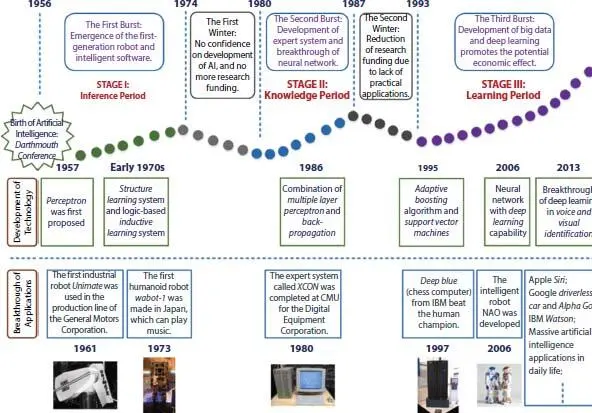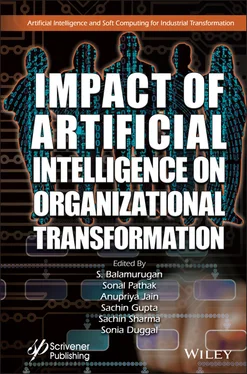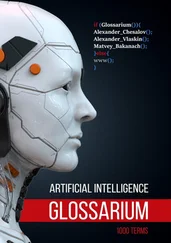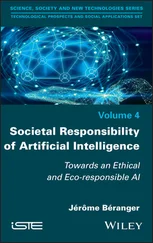In this fiercely competitive business era, Human Resource (HR) is an important asset for a business organization. This is the only living and active resource of any organization. HR Department (HRD) is handing the entire workforce from recruitment to retirement though it is very essential to make it more employee-friendly through incorporating innovative technology. AI has greater significance for HR Management (HRM) profession to complement its multifarious functions [2]. Customer satisfaction is the vital key for prospering in market place and organizations must embrace innovative HR practices. It was explained that AI-based HR practices make work of HR professionals much relaxed and productive by competent use of Chatbots [3, 4].
The world has witnessed great changes taking place in the organization, due to the increased use of innovative IT-based tools and technologies [5]. The profession of HR has come a long way from its administrative functions to the behavioral consideration and is now entering the era of automation. AI and Augmented Reality (AR) have completely redefined and reshaped the way organizations do their work.
An attempt has been made in this paper to:
Trace the evolution of AI.
Discuss the changing role of HR professionals.
Assess the impact of AI on the HR profession.
Elaborate the symbiotic relationship between AI and HR professionals.
Outline some of the limitations of applications of AI in the field of HR.
4.2 Evolution of Artificial Intelligence
Although AI is everywhere in the world from centuries, it came into fame after the 1950s. The term AI has been devised by John McCarthy and his co-founders in 1955. The AI introduced in 1950 and because of excessive expectation use of AI became immobile from 1970 to 1990s [1]. In the year 2012, a new revolutionary wave of AI-generated. Alan Turing has developed a testing technique to make a difference between the intelligence behavior of machines and humans. The test has been conducted including three components such as human foil, computer, and human interrogator . The role of the interrogator is to ask a series of questions repeatedly to the rest of the components (human foil and computer), and by this process, anyone can differentiate the humans from the computer. Monitor and keyboard play a key role during communication. This testing technique gave the strength of the idea of AI. The basic idea used in this technique was that humans are capable to store information and solve various problems whereas computers cannot do this.
Till 1974, machines could not able to store information, they face many difficulties in executing different commands. After 1974, more developed machines were introduced. These machines were ready to store more data as well as information.
In the 1980s, tools with large reserves and algorithmic commands have developed, the John Hop field and David Rumlhald implemented the “Deep Learning” method which made the device more independent in terms of independent-learning through previous understanding.
Figure 4.1describes the year wise progressive evolution of Artificial intelligence is as follows:

Figure 4.1 Evolution of Artificial Intelligence.
Note: Three stages of Artificial Intelligence are three stages is Inference, Knowledge, and Learning period. It describes the various stages of implementation of Artificial Intelligence in previous years. It also shows the evolution of AI in a periodical and systematic manner from simple to complex technology. Source: https://www.researchgate.net/publication/323591839_State-of-the-Art_Mobile_Intelligence_Enabling_Robots_to_Move_Like_Humans_by_Estimating_Mobility_with_Artificial_Intelligence/figures?lo=1.
4.2.1 Phases of Artificial Intelligence
Figure 4.2describes three phases of AI as follows:
Artificial Narrow Intelligence (ANI): It is the initial stage where there is no power of logical reasoning and problem-solving ability. It covers only one functional area.
Artificial General Intelligence (AGI): Currently, this phase is working which works on more than one functional area with advance features and starts working as human brain means thinking logically with problem-solving skill.
Artificial Super Intelligence (ASI): It is a very advance stage where it works equally as human intelligence.

Figure 4.2 Phases of Artificial Intelligence.
Note: It explains that the changeover gap is shorter during the development of ANI to AGI while longer between II and III phases. The ASI has the intelligence of humans and machines in an equal manner. Source: UBS, https://www.ubs.com/microsites/artificial-intelligence/en/new-dawn.html, 2016.
4.3 Changing Role of Human Resource Professionals
HRM has come a long way from the traditional nomenclature of Personnel Management. HR managers are nowadays viewed as catalytic agents who facilitate organizational work. Previously, companies were not so concern about the welfare, fulfillment, and happiness of their professionals but the focus was on maintaining discipline, punctuality, and wage administration. Lately, the companies realize that the employees are not like machines but they are a vital resource of the organization. Consequently, the focus shifted on attracting and retaining the talented HRs to their organization.
Due to these environmental changes, the role of HR professionals in an organization has become very complex. Therefore, it is logical that they make use of advanced IT tools and techniques such as AI for facilitating their work. Before, the implementation of AI-based technology HR professional should
List out the problems and areas where its requirement is more.
Form a team of significant stakeholders and communicate them the benefit of AI implementation in business areas to solve crucial problems.
Assess the requirement of new jobs and skilled professionals to work with AI-based technology.
Develop a basic understanding of the uses of AI in various phases of the life of an employee.Applicability of AI in the entire area of Human Resources has completely transformed the entire work process of HRM. AI is enough capable to make HR professionals work easy and to reduce their manual workload but it will never be able to replace the HR managers [6].AI is re-shaping and transforming the profession of HRM and it can be introduced in the HR process [7]. The increasing use of AI in the HR profession results in more time being available for HR managers which can be used for motivating and mentoring employees. Now, the HRD becomes more efficient by implementing AI supporting systems in its work area, and therefore, recent technologies are the key to making a workplace less categorized, more open, and more innovative as well. The HRD must align their policies and practices with technology and employees need similarly that the marketing as per customer needs.
On the other side, the HR professional should implement AI to increase the employees’ performance. There are two important functions of HRM where AI can be effectively used:
Recruitment and selection of employees.
Increasing the efficiency of employees.
It is an immense need to have deep knowledge and capability to articulate the influence of AI-based technology on HRM and its practices [8]. Similarly, those who are responsible for HRs must clear the doubts and make workers free from the stress who see AI as an enemy.
Читать дальше














